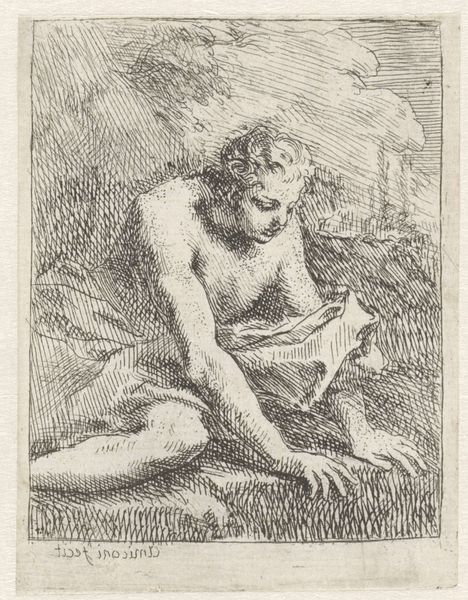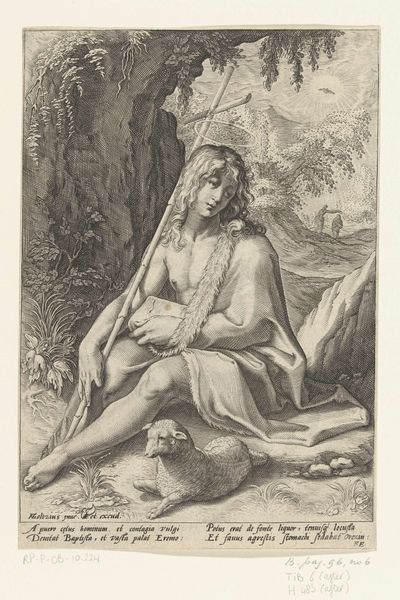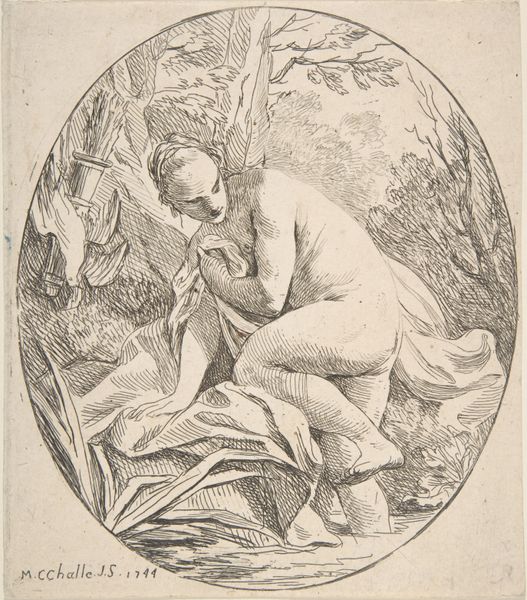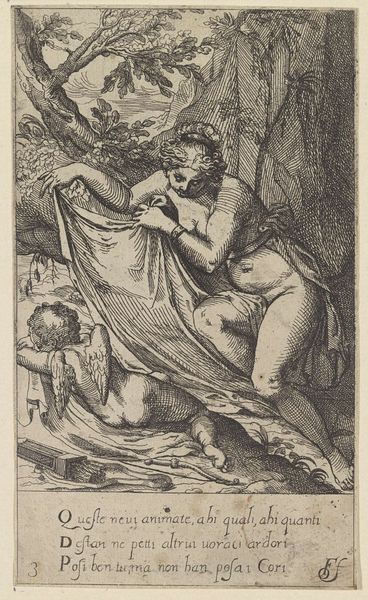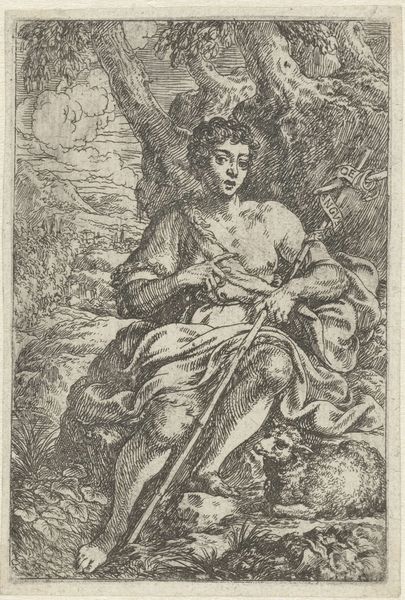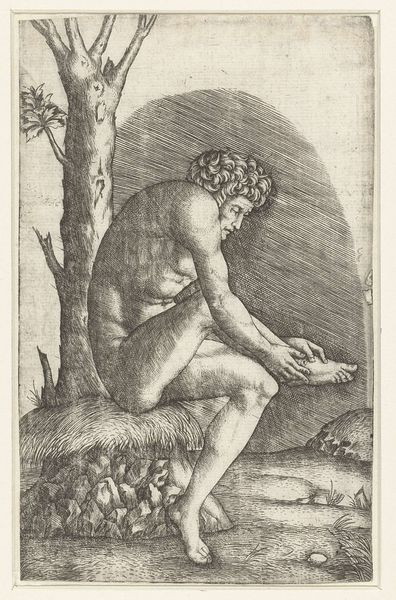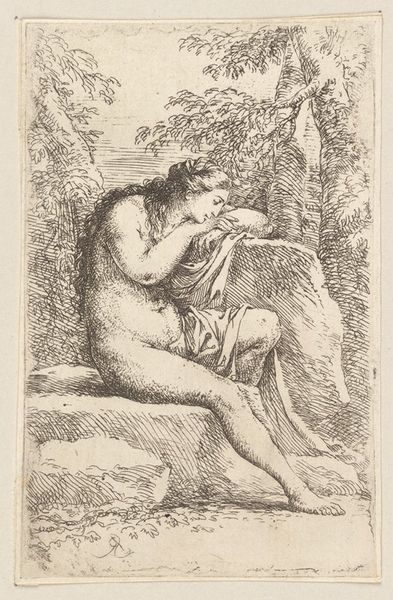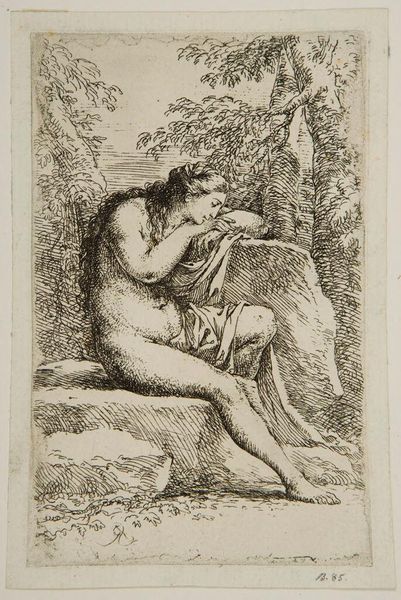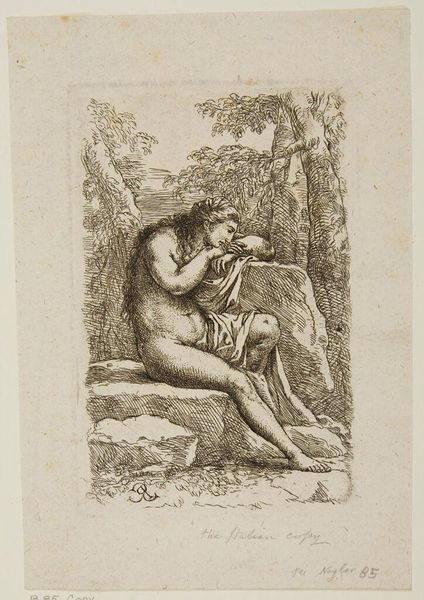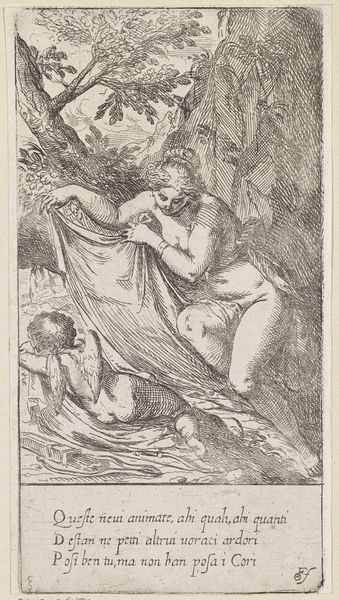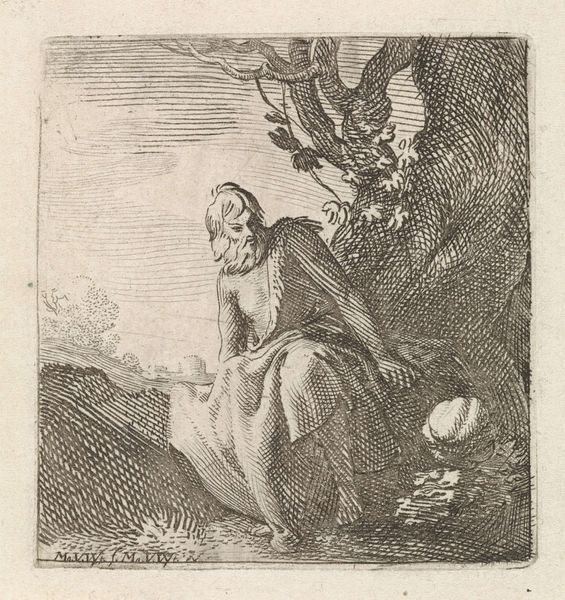
Dimensions: height 276 mm, width 210 mm
Copyright: Rijks Museum: Open Domain
Curator: This print is titled “Johannes de Doper in de wildernis” (John the Baptist in the Wilderness), and it was created sometime between 1738 and 1815 by Francesco Bartolozzi. It's an engraving. Editor: It has such a peaceful melancholy air. The use of line is so delicate. The hatching creates a strong sense of form, look at how it articulates the musculature. Curator: Indeed, Bartolozzi's technical skill with the engraving is undeniable, rendering the figure with such refinement. It fits within the baroque tradition, emphasizing dynamic compositions and dramatic subjects. Consider the setting itself. The figure is positioned next to a spring flowing over a ledge, surrounded by rocky outcroppings. Editor: Yes, the figure isn't overwhelmed by the scenery; there's a perfect balance. I’m also interested in the gaze of St. John. He looks downwards to the water source. This engraving draws on familiar conventions of Christian iconography, but by the eighteenth century, the role of the Church was increasingly coming under question in revolutionary societies. Was the print made for didactic purposes, to simply impart morality lessons, or was it supposed to invite closer examination of conventional virtue? Curator: Interesting. From an art historical perspective, this representation certainly speaks to broader cultural trends, where religious subjects were used to comment on socio-political changes and, further, the print medium allowed for wider dissemination of such ideas. Bartolozzi likely created this to engage in larger conversations about faith and ethics. The rugged wilderness also speaks to a desire for self reflection, and for re-engaging with nature as something outside of mere courtly decoration. Editor: I can also say it’s intriguing how the technique and materials speak so directly. It is spare, efficient, and affecting. A quiet image despite its cultural heft. Curator: Agreed. It presents the viewer with a visually engaging image, while speaking to broader concerns during a period of great social change and upheaval.
Comments
No comments
Be the first to comment and join the conversation on the ultimate creative platform.

